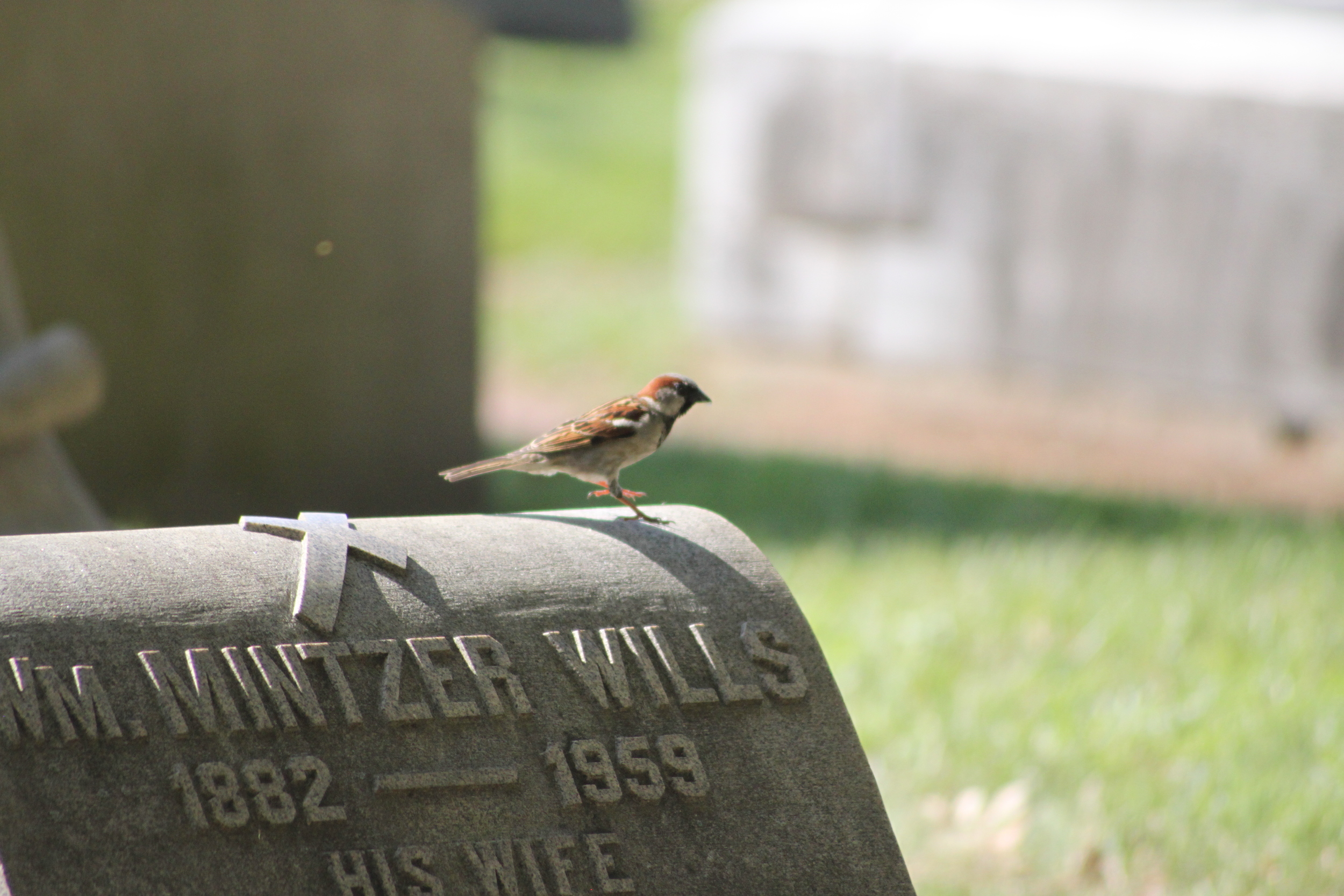Several weeks ago, our friends at Laurel Hill Cemetery informed us that there was a possible error in the information provided on The Woodlands website about James F. Magee, a prominent Philadelphian associated with the Pennsylvania Railroad. Each cemetery claimed him as a "Notable Resident," but he couldn't possibly have been buried in both places! Our summer intern Katie started sleuting and solved the mystery! Check out her research below.
Two James Magees, buried in two different historical cemeteries in Philadelphia. Which James Magee was the famed “Father of the Pennsylvania Railroad?” And who was the other man?
The search began with some basic cemetery sleuthing: looking at lot cards (see below).
Lot card of the Magee Family lot at The Woodlands, Section I, Lot 1016.
Big Clue #1: The James F. Magee buried at The Woodlands died in 1903 at age 70. If he had been the Magee of the Pennsylvania Railroad, he would have been 12 when he became a founder and director.
Part of the mystery was solved: the famous Magee associated with the Pennsylvania Railroad is buried at Laurel Hill Cemetery. However, more research exposed the life of his nephew, the James F. Magee buried at The Woodlands--especially his impact on the fields of chemistry and photography, and his contributions to the city of Philadelphia
Magee Family tree (prepared by Katie Breiner using Ancestry.com).
James Francis Magee (1834 - 1903) was born June 5, 1834 to Michael Magee and Catherine Horter. His father was a successful chemist from a prominent Philadelphia family. His uncle James later became the famous head of the Pennsylvania Railroad. James F. Magee spent his childhood in Philadelphia, raised in a house on Germantown Road. He graduated from Central High School in 1850. After high school, Magee followed his uncle’s footsteps and worked for the railroad. He left quickly, however, deciding to move to Germany began to study chemistry diligently under Hofrath Wöhler, one of the most notable German chemists.
"A reproduction of a daguerrotype of James F. Magee, taken about the time he went abroad." From An American Student Abroad: From the Letters of James F. Magee.
Big Clue #2: Magee traveled extensively throughout Europe and described his studies and experiences to his family through extensive letters, which his grandson compiled and published after his death. He wrote to his father on June 16, 1855:
My time here passes very pleasantly. I like Professor Wöhler very much and he devotes all his time to his students. I spend about nine hours a day in the laboratory… and although I have about sixteen working hours, the day seems very short. The quietness of the town I like very much, with no inducements for anything but study.
After his education and adventures, he returned to Philadelphia in 1856 and bought a laboratory on 5th Street. He started a chemical manufacturing business, soon to be the J.F. & M.H. Magee company, that specialized in solutions used for photography. Their chemicals were considered to be the best of their kind.
In December of 1859, he married Cynthia Ann Jarden and they moved to 1716 Vine Street.
Big Clue #3: According to the 1880 Philadelphia Census, he lived at the above address with his wife, four children named Cynthia W., Michael J., James F., and George W. Magee, his mother-in-law Cynthia E. Jarden, and two servants, Annie Henry and Mary Carroll.
"James F. Magee, from a later photograph." From An American Student Abroad: From the Letters of James F. Magee.
Big Clue(s) #4: Magee’s name was written in numerous newspaper articles on lists of donors and attendees for special events around the city. While Magee made his business profitable, he also was very active in his own church, Arch Street Presbyterian, and the general Presbyterian community. He was the treasurer of the Presbyterian Home for Widows and Single Women, a trustee of the Presbyterian Hospital, and a member of the Social Union, to name a few.
Big Clue #5: The Inquirer’s obituary states that James F. Magee “died suddenly” at the age of 69 on October 3, 1903. His sons inherited his effects, valued at $439,448.53.
Despite the fact that our James Magee was not as renowned as his uncle, he still left his own legacy for the city of Philadelphia.
There are still questions left unanswered in this case: How did Magee die? Did he inherit most of his money, or did he make his business that profitable? How did his chemicals affect the history of photography? The mystery continues…
---by Katie Breiner
RESOURCES
Magee, James Francis, and George Washington Magee. An American Student Abroad: From the Letters of James F. Magee. Philadelphia: Magee, 1932. Print.
"Caught on the Fly." Philadelphia Inquirer 20 Jan. 1895: 6. America's Historical Newspapers. Web. 24 June 2014.
"Presbyterians Dine February Banquet of the Social Union and Its Lady Friends at [Illegible]." Philadelphia Inquirer 25 Feb. 1890: 4. America's Historical Newspapers. Web. 24 June 2014.
"Presbyterian Home Officers." Philadelphia Inquirer 12 Dec. 1896: 15. America's Historical Newspapers. Web. 24 June 2014.
"Facts." Ancestry. N.p., n.d. Web. 20 June 2014 <http://www.ancestry.com/learn/facts/default.aspx>.
Philadelphia Inquirer 3 July 1861: 5. America's Historical Newspapers. Web. 20 June 2014.
Philadelphia Inquirer 6 Oct. 1903, 149th ed., sec. 98: 4. America's Historical Newspapers. Web. 20 June 2014.
Philadelphia Inquirer 27 Oct. 1903: 15. America's Historical Newspapers. Web. 24 June 2014.
Philadelphia Inquirer 11 Nov. 1903: 15. America's Historical Newspapers. Web. 24 June 2014.






















